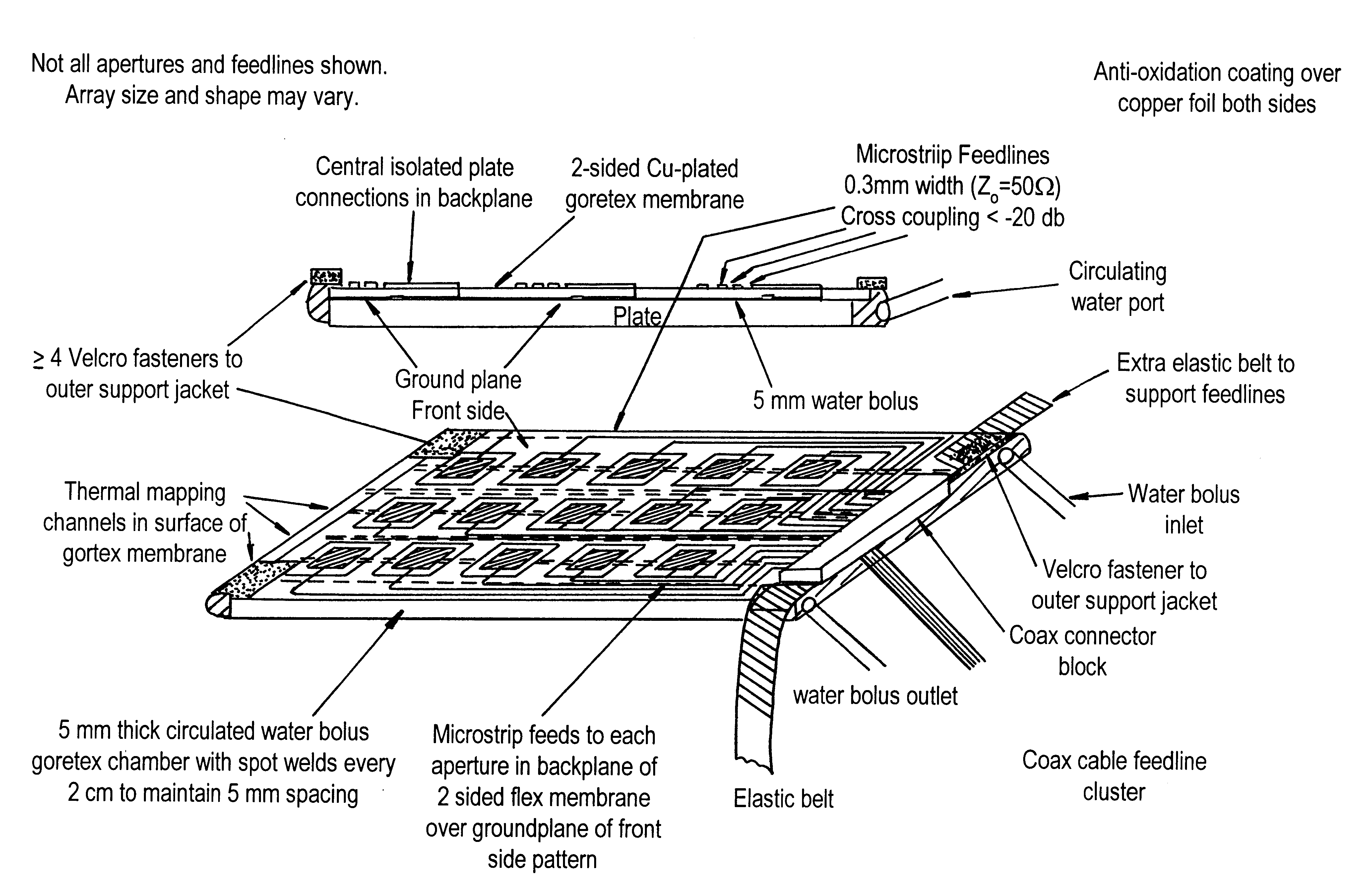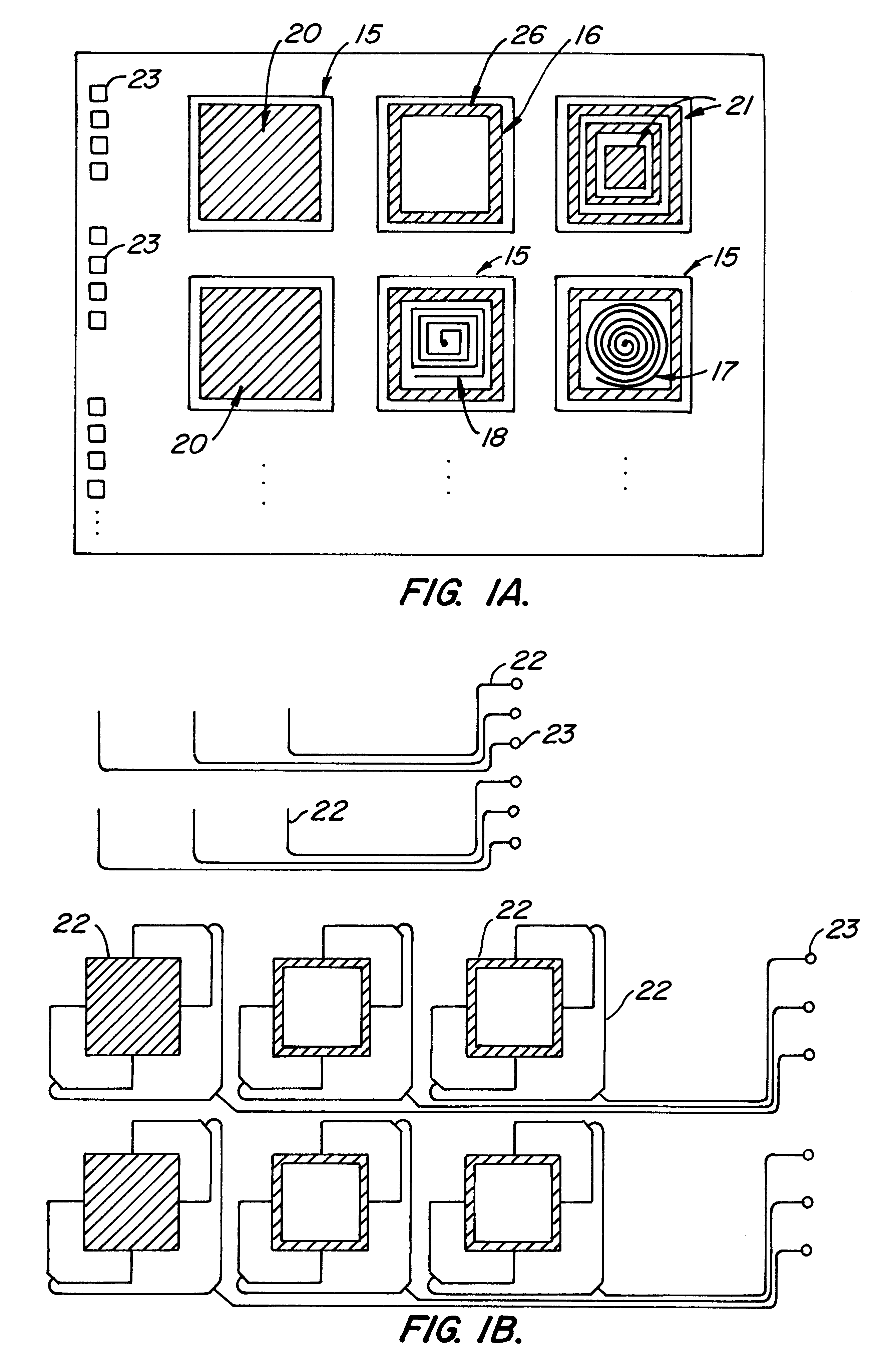Microwave garment for heating and/or monitoring tissue
a tissue heating and/or tissue technology, applied in the field of microwave arrays, can solve the problems of inability to treat the entire lateral extent of disease, difficulty in applying such devices to large areas with complex curvatures, and insufficient microwave applicators for treating many types of superficial tumors
- Summary
- Abstract
- Description
- Claims
- Application Information
AI Technical Summary
Benefits of technology
Problems solved by technology
Method used
Image
Examples
Embodiment Construction
With reference to the drawings, a flexible conformal microwave applicator 10 in accordance with one embodiment of the present invention is illustrated. The applicator includes a flexible dielectric containing compartment 11, commonly referred to as a bolus. Preferably, compartment 11 is comprised of transparent soft and flexible vinyl filled with a fluid dielectric. Preferably two hoses 12 and 13 extend to the housing to provide a flow of water, or other dielectric fluid, which serves as a coolant and temperature control for both the applicator 10 and a surface (e.g. tissue) being heated by the applicator. The dielectric could be a non-fluid but flexible dielectric, such as gels, powders, or plastics, which would provide coupling to the surface but not necessarily cooling.
Microwave applicator 10 further includes at least one flexible, printed circuit board (PCB) 14. PCB 14 includes at least one dual concentric conductor aperture (DCC aperture) 15 antenna on the front surface of the ...
PUM
 Login to View More
Login to View More Abstract
Description
Claims
Application Information
 Login to View More
Login to View More - R&D
- Intellectual Property
- Life Sciences
- Materials
- Tech Scout
- Unparalleled Data Quality
- Higher Quality Content
- 60% Fewer Hallucinations
Browse by: Latest US Patents, China's latest patents, Technical Efficacy Thesaurus, Application Domain, Technology Topic, Popular Technical Reports.
© 2025 PatSnap. All rights reserved.Legal|Privacy policy|Modern Slavery Act Transparency Statement|Sitemap|About US| Contact US: help@patsnap.com



